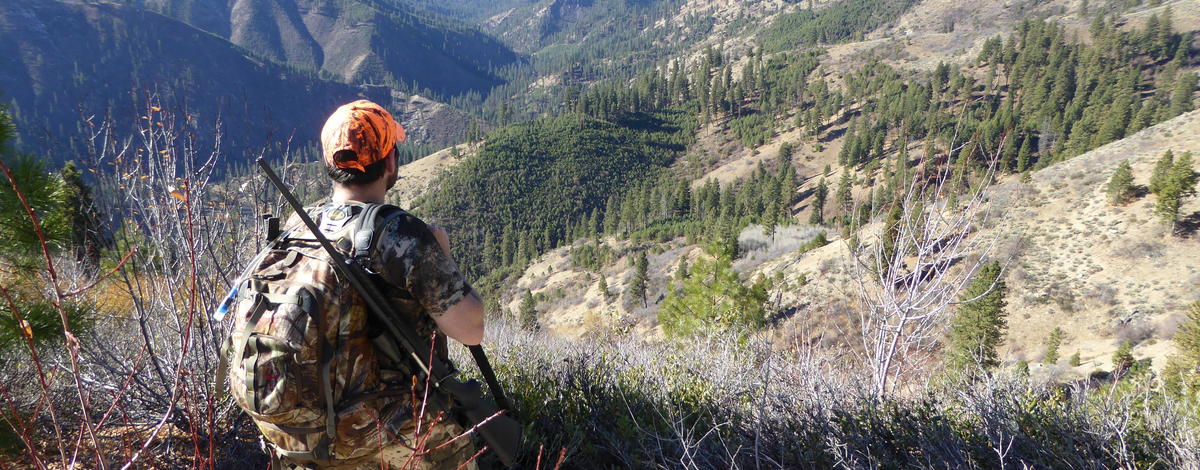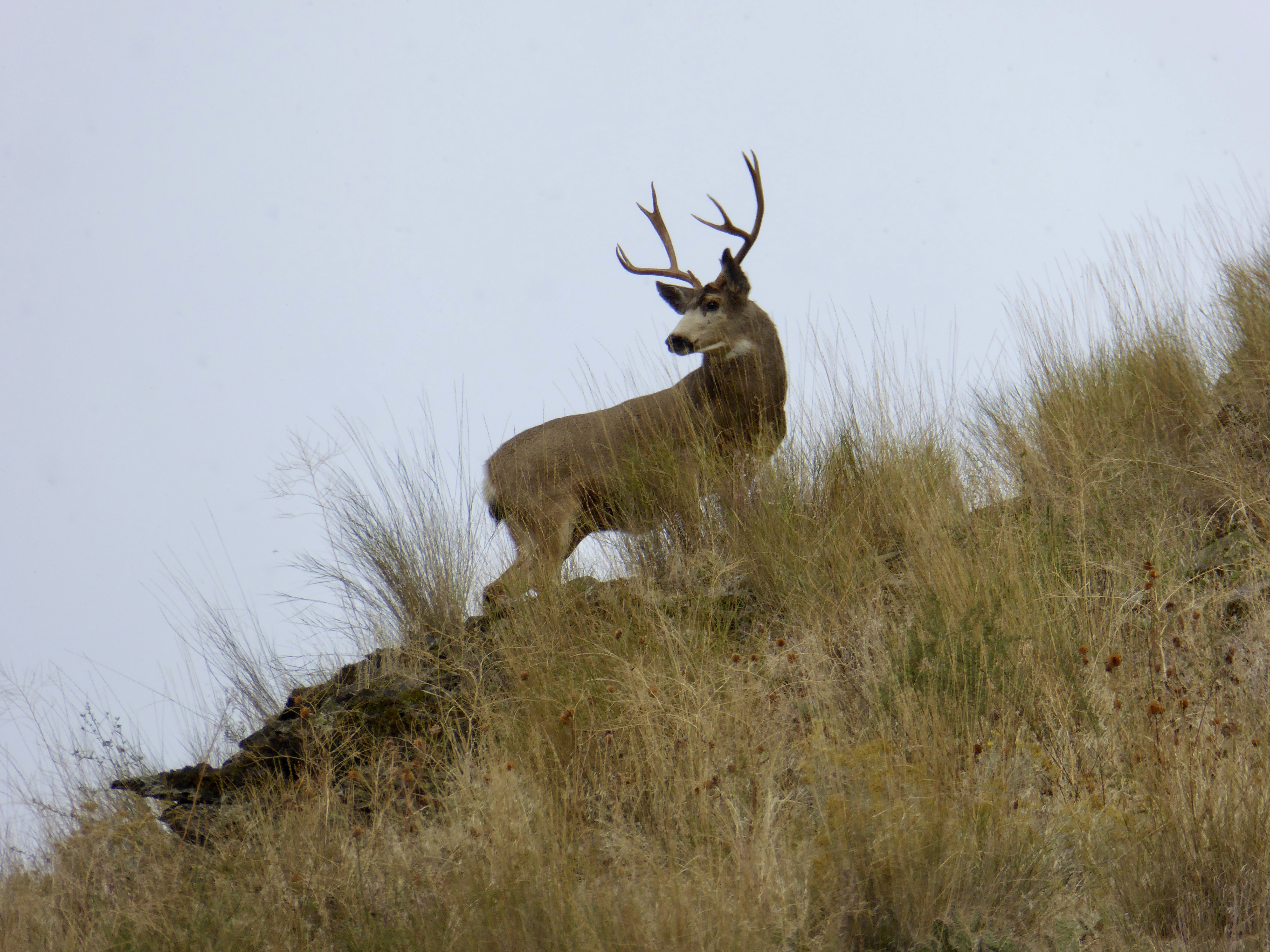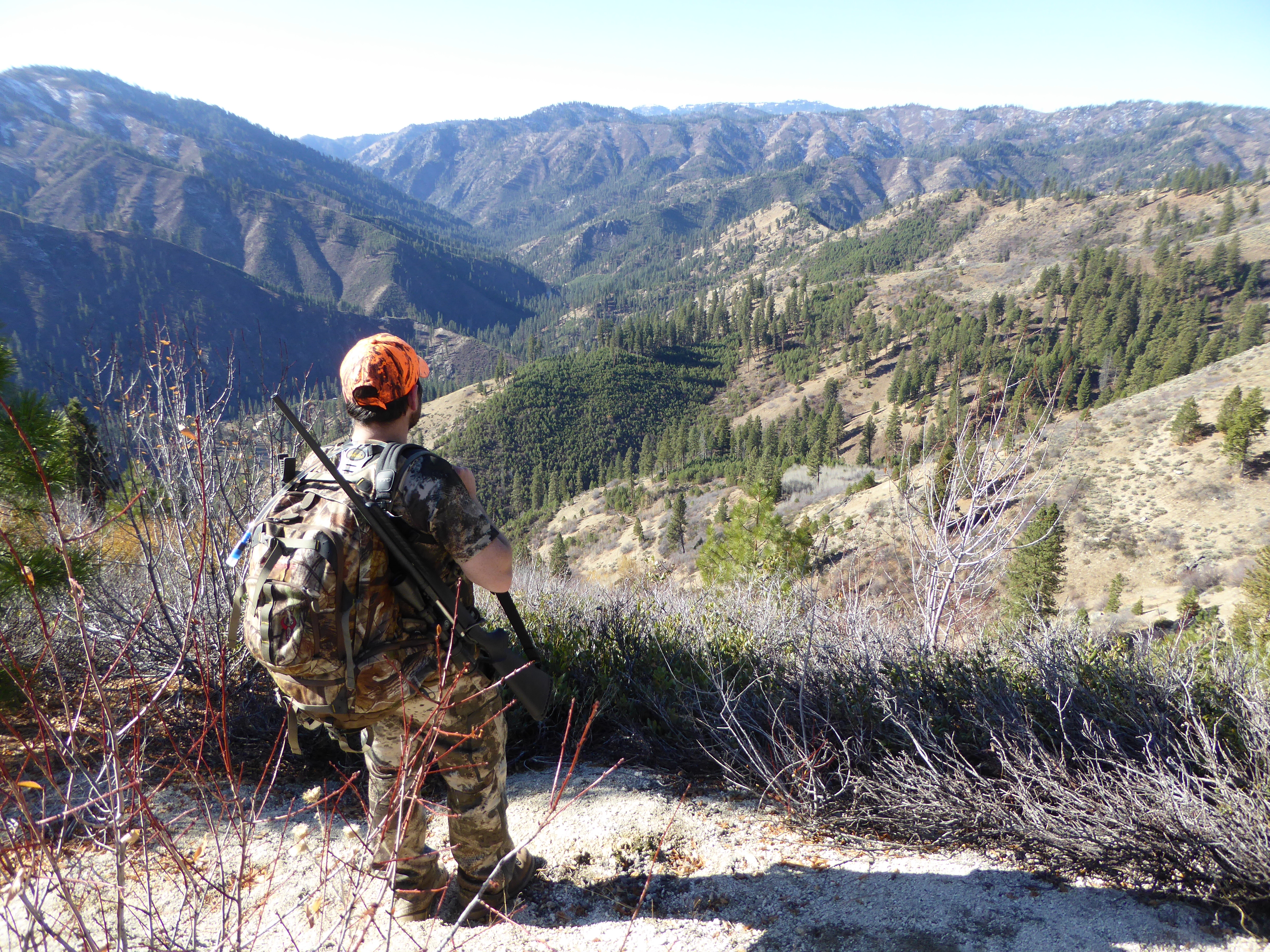Idaho is rich in big game hunting opportunity
Idaho has excellent big game hunting that include 10 species of animals, six of which are open to general hunting and four are restricted to controlled hunts only. Elk, deer (mule deer and white-tailed deer), black bear, mountain lion and wolf all have general seasons with over-the-counter tags. Moose, pronghorn, mountain goat and bighorn sheep are all limited to controlled hunts. Learn more about controlled hunt applications on the big game hunting webpage.
Idaho has a wealth of public land available for hunting
Roughly two-thirds of Idaho is public land, and there are lots of hunting opportunities found there for all big game species. All that public land means everyone has the opportunity to hunt Idaho’s big game. Fish and Game also provides access to millions more acres of private lands through its access programs that hunters are free to use, but they need to learn each land owners rules and abide by them. Learn more at the hunting and fishing access webpage.
Don’t mistake easily available for easy
Idaho is a geographically diverse state that has lots of game, but the terrain is likely to be steep, rugged, remote, thickly forested, wide open or a combination of all the above. To be a successful hunters, you have to be prepared for the challenges presented by the animals and the landscapes where they live, and neither are push overs. Whether you’re looking to fill the freezer with meat, or tag the trophy of a lifetime, the opportunities are there, but be prepared to work for them. You can get some tips on how to find game in our video scouting series.
Maximize the hunting season
You can hunt some big game in Idaho nearly year round. Most hunting starts in late summer and runs into winter but there are longer seasons for wolves, bears and mountain lions. Many people focus on the general, any-weapon deer and elk seasons that mostly happen in October and November. If you’re interested in using rifle, archery and muzzleloader and include other species, you can really expand your hunting calendar and time in the field. Check out the big game seasons and rules for details.




